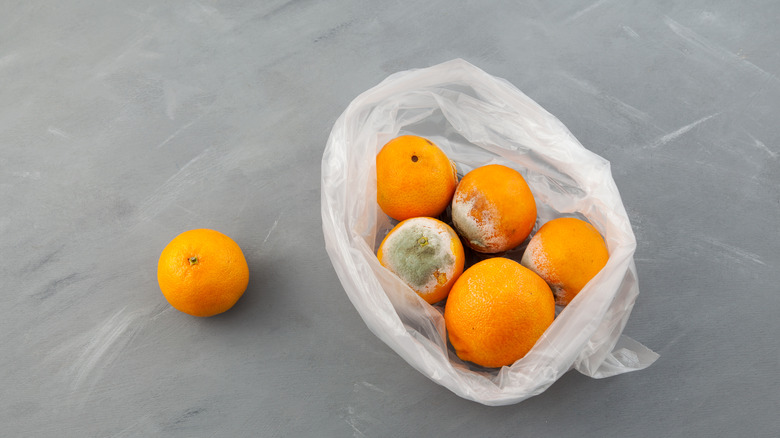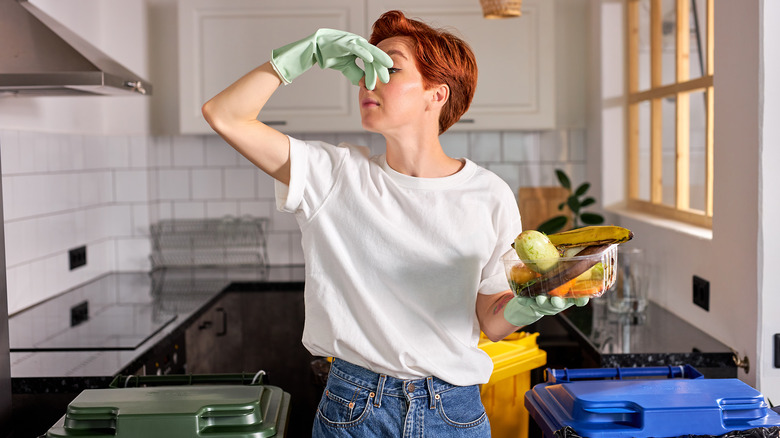How Bad Is It To Eat Moldy Fruit?
Whether you're the sort who devours blue cheese at every opportunity, or the one who avoids it at all costs, we can all agree on one thing – blue-green veins in fancy cheeses are expected, but blue-green fuzz on that package of strawberries in the fridge is cringe-worthy and gross. But is there really much difference? If it's okay to scarf down the cheese, do you really need to toss the berries?
While it's normal for certain foods to have mold on or in them – like the aforementioned cheeses, and dry-cured country hams – these molds are known to be either safe to eat (blue cheeses) or, in the case of ham, they can be safely washed off without affecting the meat. When it comes to mold on fruits though, it's a different story.
Most experts agree that, if you eat a bite or two of a moldy apple before realizing your mistake, there's no need to panic. Dr. Rudolph Bedford, a gastroenterologist at Providence Saint John's Health Center in Santa Monica, told Women's Health, "It's very uncommon that you're going to get [really] sick from mold. The stomach is a harsh environment, so, for the most part, most bacteria and fungus won't survive."
With mold, it's better safe than sorry
That doesn't mean you shouldn't be careful though. Although it's rare, certain molds can be toxic and have the potential to make you really sick. And along with any visible mold on your fruit, there's probably another, invisible growth – bacteria – which can cause foodborne illness (via Cleveland Clinic).
Soft fruits – think berries and stone fruits like peaches and apricots, among others – are especially prone to bacteria growth because of their high moisture content. That's why, while many hard, low-moisture products like hard cheese or carrots can usually still be safely eaten after carefully cutting the moldy section away, fruits can't. Dietitian Lillian Craggs-Dino notes "Fruit has a lot of moisture and this mold could also harbor bacteria. Toss the pack since the spores are airborne, and most likely the entire package is contaminated even though you don't see the fuzzy growth on all the fruit."
Sure, it's hard to toss an entire package of fruit that just has a few moldy spots to it. But when it comes to mold and bacteria, it's better to err on the side of caution. John Ward, certified mold inspector and remediator in Ottawa, Canada, advises "The best advice I can give you is to use good judgment, and if you're still unsure about that punnet of berries, it's better to be safe than sorry and simply toss it away" (per Eat This, Not That!).


